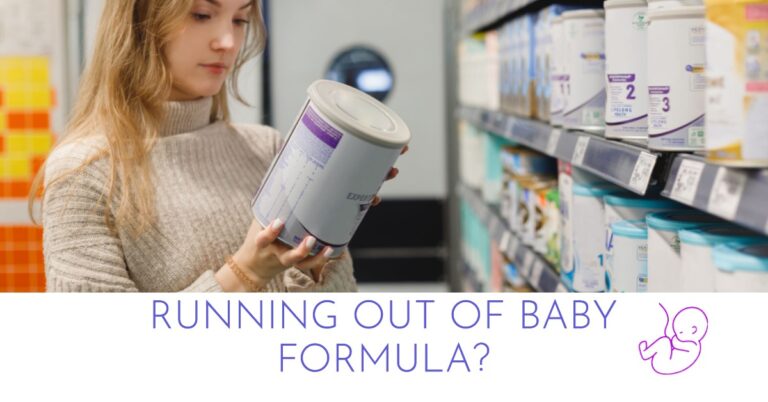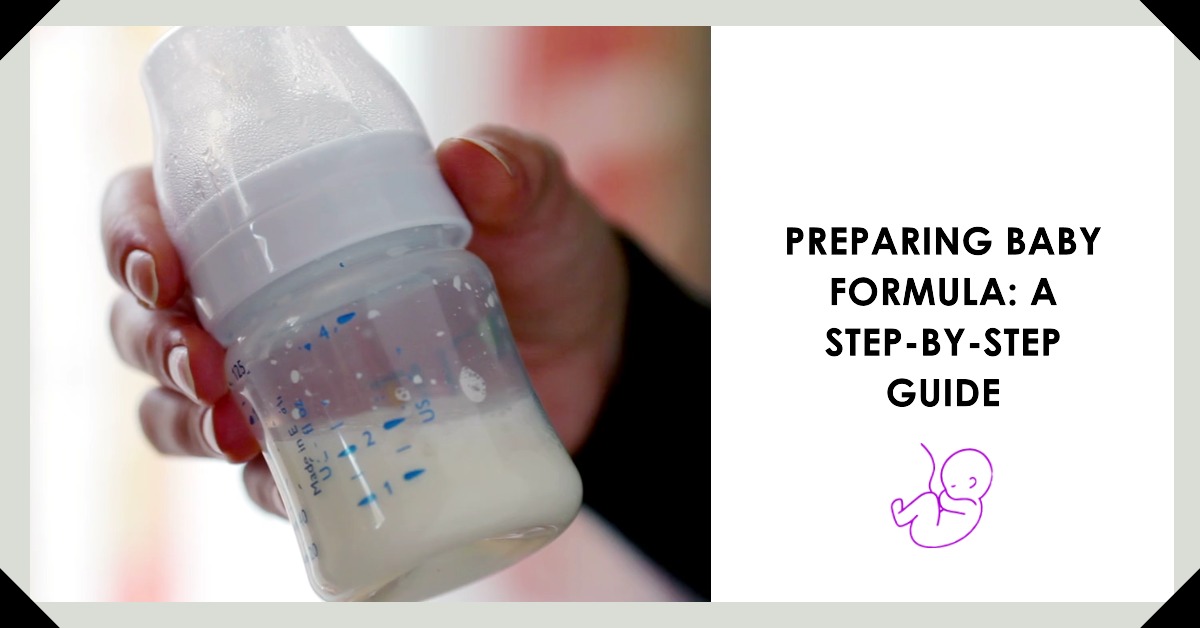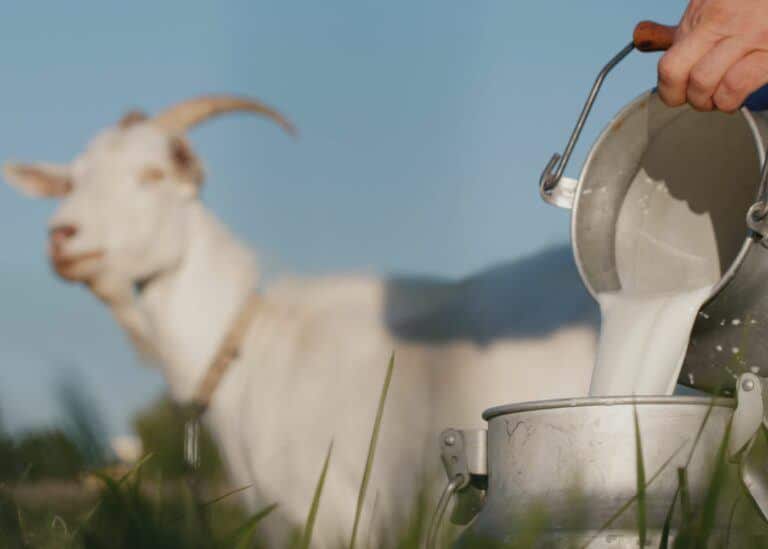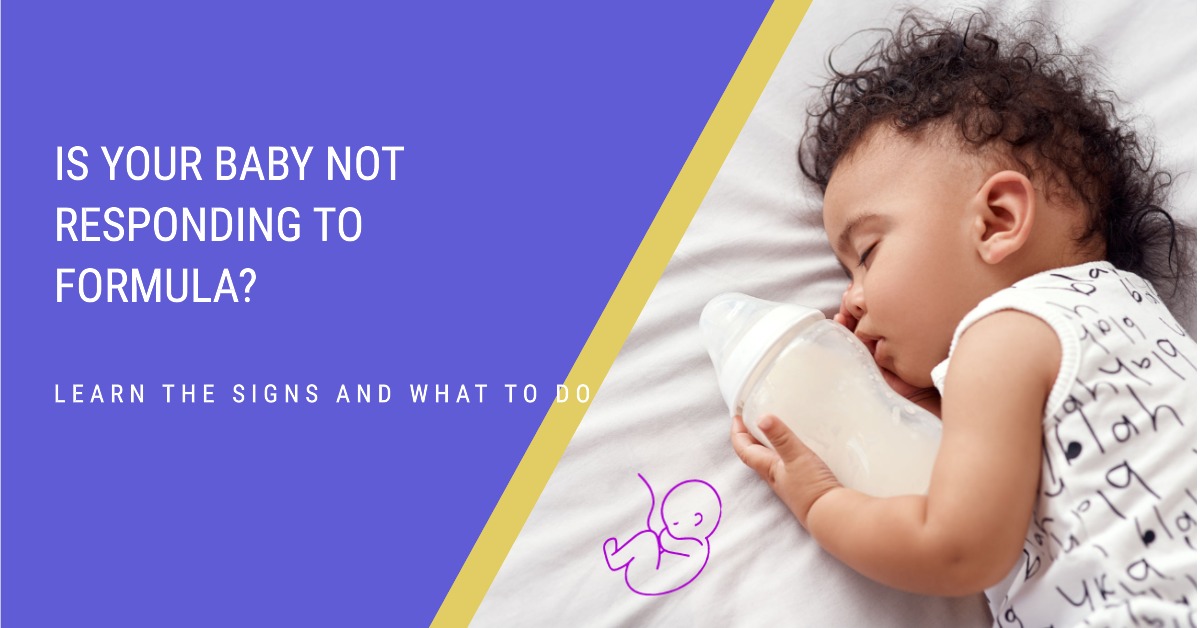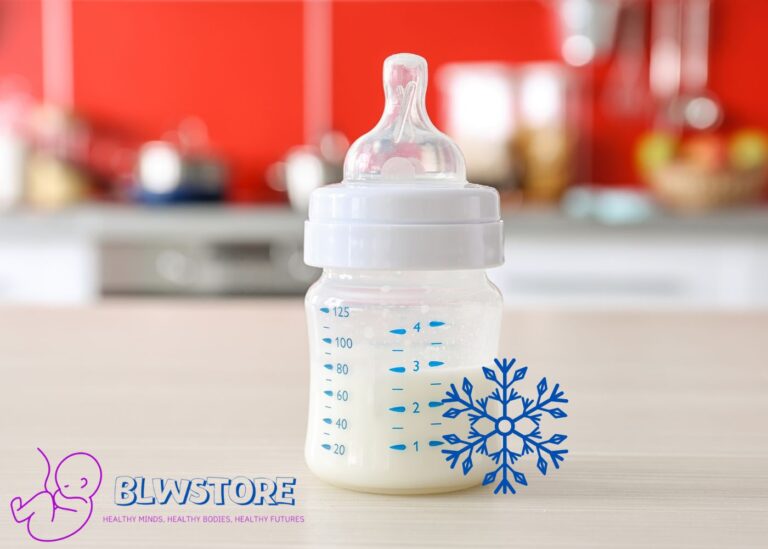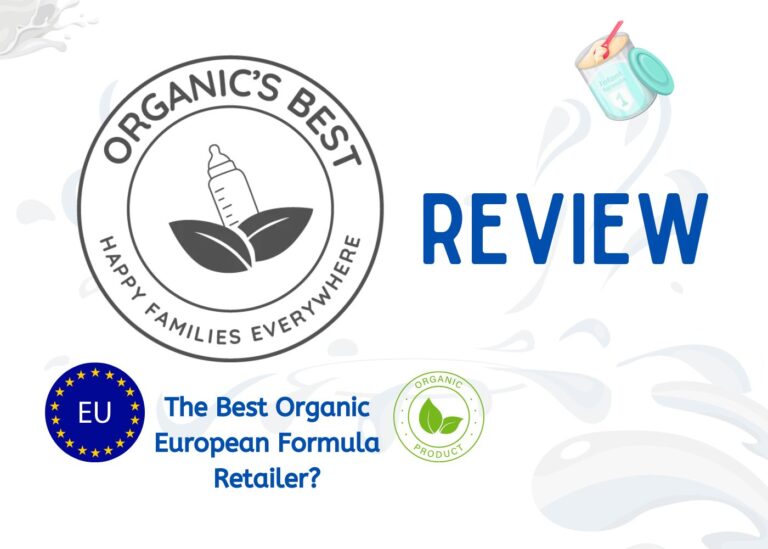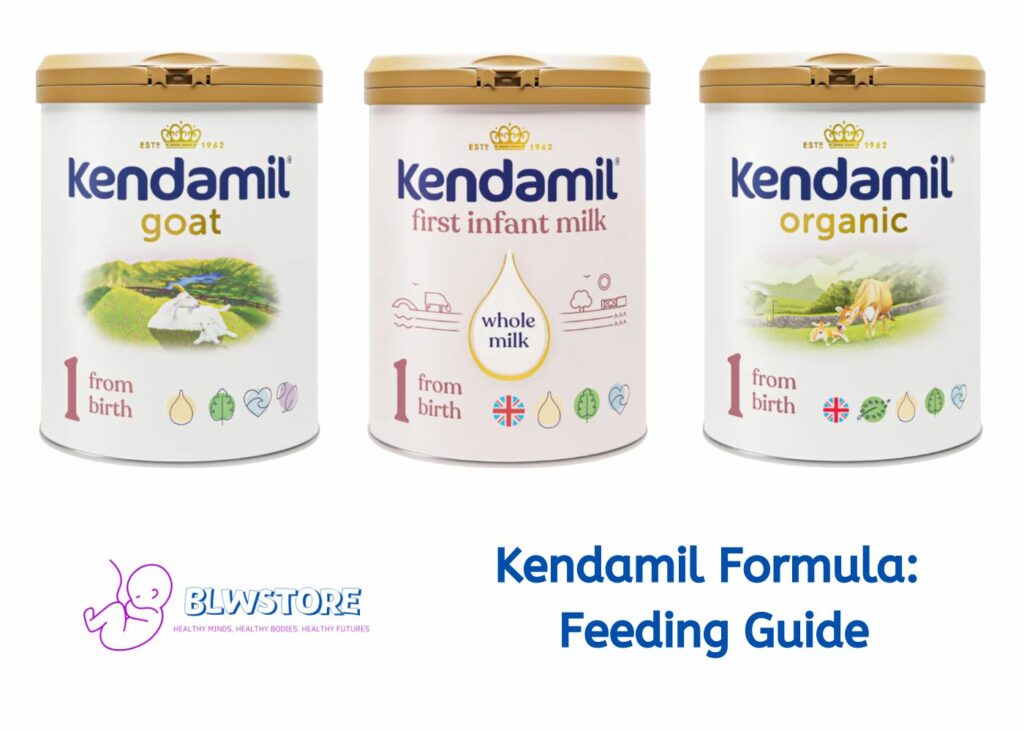
Key Takeaways
Correctly mixing Kendamil formula is essential for proper nutrient balance, consistency, and safety.
Feed your baby on demand, not on a strict schedule.
For mixing Kendamil formula, use boiled tap water or bottled water with low mineralization.
Kendamil formula shelf life: Unopened lasts 2 years from the manufacturing date, and opened should be used within 4 weeks.
Prepared formula should be consumed within 2 hours at room temperature.
Create a comfortable environment, use proper feeding positions, and bond with your baby during feeding time for a successful experience.
Blwstore is supported by its audience. When you buy through links on our site, we may earn an affiliate commission.
If you are here, it’s because you have chosen Kendamil Formula, congratulations! It’s one of the best formulas in the world right now.
This article serves as a guide for parents who need some advice on how to feed Kendamil formula.
So without further ado, let’s get after it!
Recommended read: Top sugar-free formulas | Kendamil Cow vs Goat
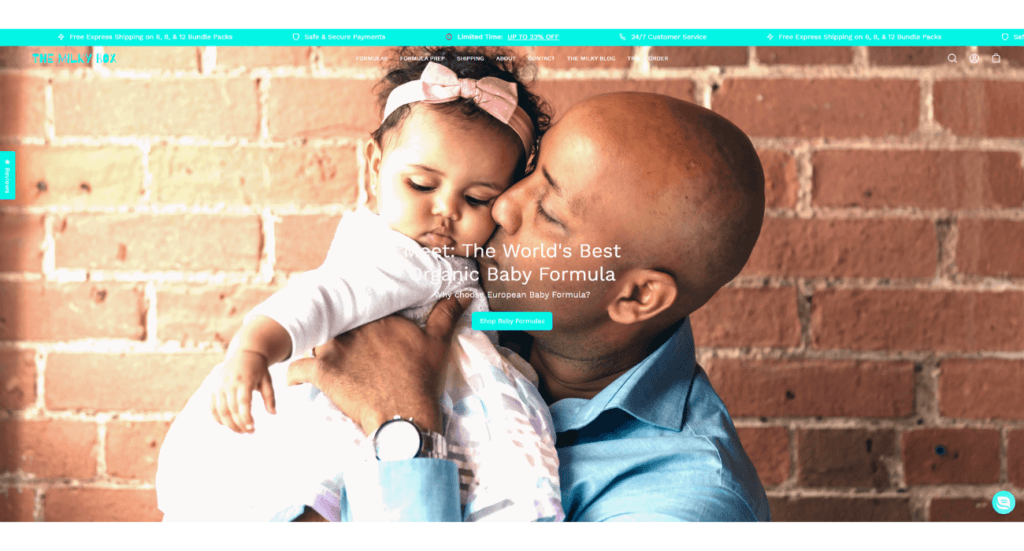
The Milky Box: Best store to buy kendamil formula
Use the code BLWSTORE for a 5% Off
At BLWStore, we may earn a commission from some of the products featured on our website through affiliate partnerships with retailers. We want to be transparent with our readers and let you know that we do not receive any products for special consideration. The commission we earn helps support our website and allows us to continue providing helpful information and product recommendations. Thank you for your support!
How to Mix Kendamil Formula: The Perfect Blend
Correct water-to-powder ratio achieves proper nutrient balance and consistency and ensures the formula is safe for consumption.
Follow the instructions: sterilize utensils, use cooled boiled water, level scoops, and achieve the right temperature.
Why is it important to nail the mixing process?
You might be thinking:
“How hard can it be to mix some powder with water?”
You’d be surprised to know there’s more to it than meets the eye.
When we started doing it, I thought it was going to be easy, but it was not. However, it only took me a couple of tries to become an expert.
It is one of those things where you become an expert when you do it properly one time.
But why is it so important?
Nutrient balance: The correct ratio of water to powder is crucial for achieving the proper nutrient balance. Too much water can dilute the formula, depriving your baby of essential nutrients, while too little water can lead to a higher concentration of nutrients, which can put stress on your baby’s kidneys and cause dehydration.
Consistency: Achieving the right consistency is essential for your baby’s digestion. If the formula is too thick, it can be challenging for your little one to swallow and digest, leading to discomfort and feeding problems. On the other hand, if the formula is too thin, it may not provide enough nutrition for your growing baby.
Safety: Lastly, following the correct mixing process ensures the formula is safe for consumption. Using too hot water can cause the formula to clump, leading to choking hazards, and if it’s not warm enough, it won’t properly mix.
Step by Step instructions
| Step | Instructions |
|---|---|
| 1 | Always wash your hands thoroughly with soap and water. |
| 2 | According to the manufacturer’s instructions, sterilize all feeding utensils, including the bottle, cap, and teat. |
| 3 | Boil freshly run water and leave it to cool for 10 minutes. Do not use artificially softened or repeatedly boiled water. |
| 4 | Add the correct number of leveled scoops to the bottle using the scoop provided. Always level the scoop. |
| 5 | Consult the feeding guide to determine the appropriate amount of water based on your baby’s age and weight. For Stage 1 (0 to 6 months), add 1 level scoop of powder to each 30ml of water. For Stage 2 (6 months – 1 year) and Stage 3 (12 months and on), add 1 level scoop of powder to each 30ml of water. |
| 6 | Add the cooled, boiled water to the bottle, filling it to the desired amount. |
| 7 | Place a sterilized cap on the bottle and shake it vigorously to dissolve the powder. |
| 8 | Remove the cap and replace it with a sterilized teat. |
| 9 | Cool the formula to a natural drinking temperature of 37°C (98.6°F). Always test the temperature before feeding your baby. |
What’s the perfect consistency for a baby formula?
Here’s the official video from Kendamil on how to prepare a bottle:
Tips to Prepare Kendamil Formula
Use boiled tap water or bottled water with low mineralization, and heat to around 70°C to dissolve the powder and kill potential bacteria effectively.
Sterilizing bottles, nipples, and pacifiers after every use is not necessary, but hand hygiene before preparing formula is crucial.
What water should you use for formula?
Boiled tap water: there’s no problem in using tap water if it’s drinkable. Remember that boiling it to sterilize and eliminate possible harmful microorganisms is always necessary.
Bottled water: Bottled water with low mineralization is another option, but it’s usually more expensive than tap water. It’s not necessary to boil the bottled water, but it should be heated enough to mix the formula more easily.
Learn more: Best water for baby formula
Temperature control
Ideal temperature: The ideal temperature for mixing Kendamil formula is around 70°C (158°F) to dissolve the powder and kill any potential bacteria effectively. We recommend using a thermometer at the beginning to ensure accuracy.
Cooling down: Once the formula is mixed, let it cool down to body temperature (around 37°C or 98.6°F) before feeding it.
Do I need to sterilize after each feeding?
No, you don’t need to sterilize the bottle after each feeding. Here are some tips that can help you and solve some natural doubts as a parent:
Sterilization frequency: Most pediatric associations agree that sterilizing bottles, nipples, and pacifiers after every use is unnecessary.
- Initial sterilization: It’s vital to sterilize these items before their first use, and then every 15 days or when needed.
Cleaning: Thoroughly washing with soap and water after each use is more important than frequent sterilization.
Hand hygiene: Always maintain good hand hygiene before preparing a bottle for your baby.
Sterilization methods: Choose from various methods such as boiling, electric sterilizers, microwaving, or using disinfectant solutions to sterilize feeding equipment.
The most important tip is to wash your hands before preparing formula and feeding it to your baby. We can’t stress this enough.
Kendamil Feeding Guide: Ensuring the Right Amount
A baby should always be fed on demand. Forget about using schedules and overcomplicating yourself. As a general rule, your baby will let you know if he is hungry.
Now, it is possible that if your baby has some digestive difficulty or diagnosis, he may not correctly express when he is hungry. It is essential to talk to your pediatrician if you think something is wrong.
| Age | Average Number of Feedings per Day | Quantity per Feeding |
|---|---|---|
| 0-1 month | 8-12 | 60-90 ml (2-3 oz) |
| 1-3 months | 7-9 | 90-150 ml (3-5 oz) |
| 3-6 months | 6-7 | 180-210 ml (6-7 oz) |
| 6-9 months | 5-6 | 210-240 ml (7-8 oz) |
| 9-12 months | 3-4 | 210-240 ml (7-8 oz) |
Kendamil: How Long Does It Last? Storage and Shelf Life
Kendamil Formula Shelf Life:
Unopened: 2 years from the date of manufacture
Opened: Use within 4 weeks, store in a cool, dry place
Prepared Formula Guidelines:
Consume within 2 hours at room temperature
Discard any remaining formula after 2 hours
If necessary, store in the fridge within 2 hours of preparation (not recommended for later use)
Kendamil: How Much Formula Do You Need to Buy
Below are two tables that approximate the amount of Kendamil formula you will need for one baby.
Remember that you should always feed on demand, so take this information as a general guideline. Every baby is different.
Since Kendamil is from UK, the amounts are measured in grams. Each can of Kendamil has 900 grams of formula powder.
| Age Group | Formula per Feeding (grams) | Feedings per Day |
|---|---|---|
| Newborn (0-1 mo) | 8.6-12.9 | 8-12 |
| 1-3 months | 17.2-21.5 | 6-8 |
| 4-6 months | 25.8-30.1 | 5-6 |
| 7-9 months | 30.1-34.4 | 4-5 |
| 10-12 months | 30.1-34.4 | 3-4 |
| Age Group | Monthly Formula (grams) | Cans of Kendamil Needed per Month |
|---|---|---|
| Newborn (0-1 mo) | 3225 | 4 |
| 1-3 months | 4074.5 | 5 |
| 4-6 months | 4611.75 | 6 |
| 7-9 months | 4353.75 | 5 |
| 10-12 months | 3393.75 | 4 |
Tips for a Successful Feeding Experience
Feeding your baby Kendamil formula can be more than just providing nourishment.
It’s also an opportunity to bond with your little one and create lasting memories.
Comfortable Environment
Creating a cozy and soothing environment is critical to a successful feeding experience.
Make sure the room is quiet, warm, and has soft natural lighting if possible. This will help your baby feel safe and relaxed, allowing them to focus on feeding.
You can also play gentle music or white noise in the background to enhance the calming atmosphere, we are music lovers, and Pablo is as well nowadays.
Proper Feeding Position
Cradle hold: Place your baby’s head in the crook of your arm and support their body with your forearm. Their body should be at a slight incline to prevent choking.
Football hold: Tuck your baby under your arm, with their head resting in your hand and their body along your side. This position is particularly helpful for mothers who have had a C-section or for feeding twins.
Upright hold: Hold your baby in a more upright position with their head supported by your hand. This position is beneficial for babies with reflux or digestion issues.
Bonding with Your Baby
Feeding time is a perfect opportunity to connect with your baby.
Maintain eye contact and talk to them in a soft, soothing voice.
You can also gently stroke their head or cheek while feeding.
This creates a sense of closeness and helps your baby associate feeding time with positive emotions.
Conclusion
And there you have it, a comprehensive guide to properly preparing and feeding Kendamil formula to your little one.
As we’ve discussed, taking the time to mix and prepare the formula correctly, ensuring you feed the right amount, and considering your baby’s unique needs are all vital steps in providing optimal nutrition and a positive feeding experience.
Remember to trust your instincts and rely on the knowledge you’ve gained, and if you have questions or any personal experiences, we’d love to hear about them.
Happy feeding!
We’re Maria and Alberto, a married couple and educators who are nutrition enthusiasts. Even before we had kids, we were already crazy about nutrition.
We’d read scientific articles, watch videos from nutritionists, and spend hours listening to nutrition podcasts.
Today, we continue doing this, but in a different way, as we’ve learned to sift through the noise and trends. Nutrition, like any other field of knowledge, the more you read and learn, the more you develop a comprehensive understanding of reality, and that’s what has happened to us.
Before having our first child, we focused on learning everything we could about child nutrition, using the same techniques we had already employed, backed by our extensive knowledge in nutrition.
Our mission is to help other parents with their children’s nutrition, to help them become the best versions of themselves.
If we are what we eat and drink, which is absolutely true, let’s do it right!


